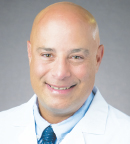
Anthony Perre, MD
As you probably already know, physicians do not make the best patients. When I began experiencing the early signs of Hodgkin lymphoma, in 2007, including a persistent cough, unusual fatigue, and pruritus, I self-diagnosed allergic rhinitis and began treatment with intranasal corticosteroids. Although my symptoms continued to worsen despite the treatment, what finally sent me to seek medical attention was a large lymph node that had become apparent above my right collarbone. A computed tomography scan showed multiple masses in my chest, which signified either lung cancer or lymphoma. Either way, I knew I had just transitioned from healthy physician to patient with cancer.
A tissue biopsy of the lymph node in my neck confirmed mixed-cellularity Hodgkin lymphoma, which carries a slightly worse prognosis than the nodular sclerosing type, but because the cancer was at a relatively early stage, IIa, my chance for a cure was high, about 88%. Still, I couldn’t help worrying about what if I fell into that 12% of patients with incurable disease? And, even if I were cured, I wondered, how high was my risk for developing a secondary cancer years after completing treatment, when I possibly had more health vulnerabilities and was less likely to tolerate additional aggressive treatment?
Weighing Risk vs Benefit
As an internal medicine physician, I have a good baseline knowledge of cancer, and after a quick search on the Internet about Hodgkin lymphoma, I knew that my likely treatment would include the chemotherapy regimen ABVD (doxorubicin, bleomycin, vinblastine, and dacarbazine). However, one of the first challenges I faced following my diagnosis—and one of my fiercest debates with my oncologist—was whether to add radiation therapy to the mix. My oncologist said adding radiation therapy to my treatment plan would likely give me an extra 6% to 8% chance for a cure, but it could also add to my risk for a secondary malignancy.
At the time, my wife and I were raising 3 young children, and, at age 38, it was more important for me to try for an immediate cure and worry about any potential future health repercussions later.
Having Cancer Is Personal
The treatment was remarkably effective. After just two cycles of ABVD, my interim positron-emission tomography scan was negative for F-fluorodeoxyglucose–avid disease, and my physical symptoms had vanished. I was surprised at how well I felt. Ironically, about a month before my cancer diagnosis, I had made plans to leave my private practice to launch a hospitalist program at a major cancer center. Once in remission, I was able to move ahead with those career plans. However, the lingering physical and psychosocial side effects from my cancer remain with me all these years later, but rather than hinder my personal and professional life, in many ways they are enhancing it.
My reaction to the concerns and fears of my patients ... is no longer merely theoretical, because I live with those same concerns and fears every day.— Anthony Perre, MD
Tweet this quote
I have treated patients with cancer for much of my medical career, so I thought I knew what to expect after getting my own diagnosis, but I was wrong. Although I was spot on about the physical side effects of my chemotherapy and radiation therapy—I have hypothyroidism, a common side effect from radiation therapy to my neck—I was not prepared for the emotional turmoil that lingered for years after the initial diagnosis.
In addition to my fear about a cancer recurrence or treatment-related second cancer, which is so strong, I sought the advice of a health coach to help me cope. I often have anxiety before a doctor’s appointment, even though I have transitioned back to my primary care physician for routine care, worried about what the next test might show. I know I’m at high risk for a number of late effects from treatment, including lung problems and heart disease. I find that sometimes I have to educate my primary care physician about these potential consequences of having cancer and remain constantly vigilant to prevent serious health problems as I grow older.
Now I know firsthand what my patients experience when they are diagnosed with cancer. My reaction to their concerns and fears is no longer merely theoretical, because I also live with those same concerns and fears every day.
In my role as Director of New Patient Intake at Cancer Treatment Centers of America in Philadelphia, I’m usually the first physician seen by new patients for their initial consultation. Sometimes during those consultations, I divulge my cancer experience to acknowledge the legitimacy of their anxiety and also to credibly reassure them that long-term remission and cure are possible. These interactions are personally gratifying to me.
Living in the Present
Cancer has not only made me a better doctor, it’s made me a better person. When you have survived a life-threatening disease like cancer, needing peer approval is no longer necessary nor wanted. You are self-validated in your own worth. I know this may seem trite to say, but now I see only the big picture in my life. I don’t have the desire or the time to indulge in life’s pettiness or to give power to negative energy. I’m more tolerant and less judgmental of others’ shortcomings as well as my own. I know what’s important in life: my family, my friends, my patients—and today. ■
Dr. Perre is Chief of the Division of Outpatient Medicine at Cancer Treatment Centers of America (CTCA), and Director of New Patient Intake and Vice Chief of Staff at CTCA Philadelphia.
Editor’s Note: Columns in the Patient’s Corner are based solely on information The ASCO Post received from the survivors interviewed and should be considered anecdotal.

